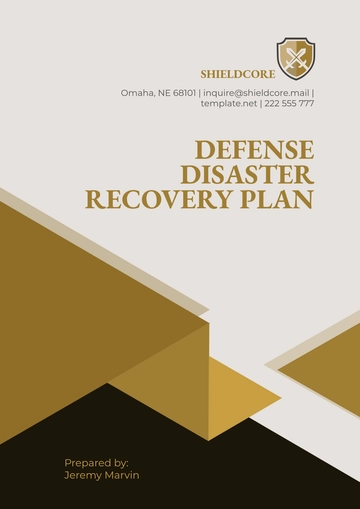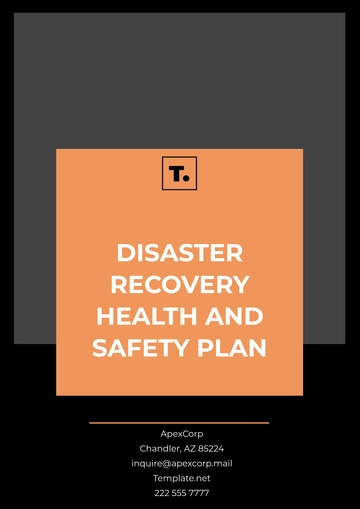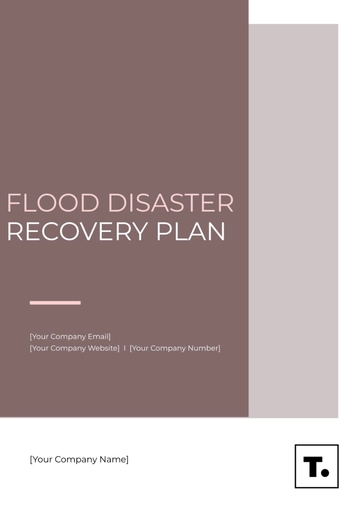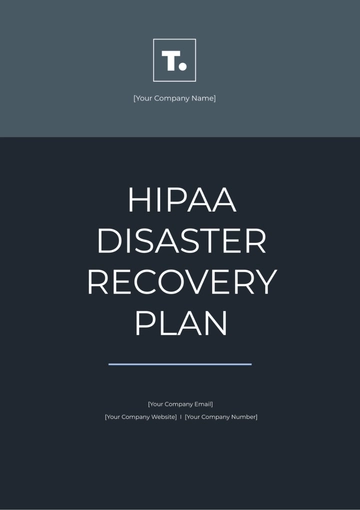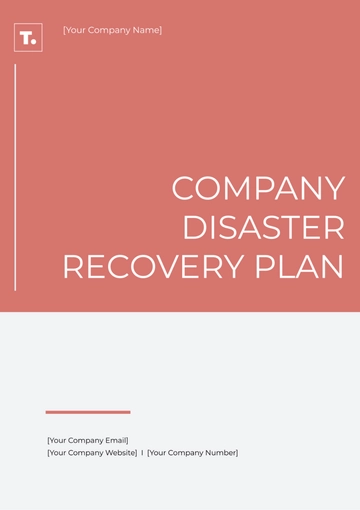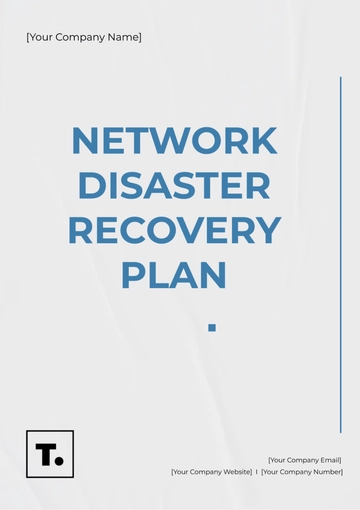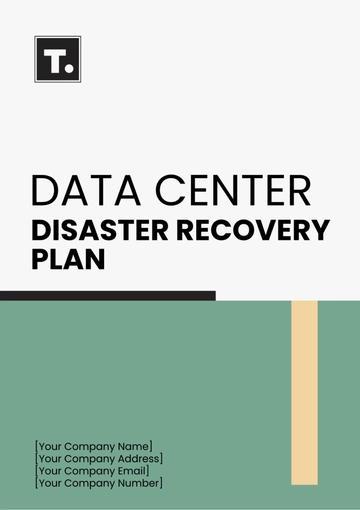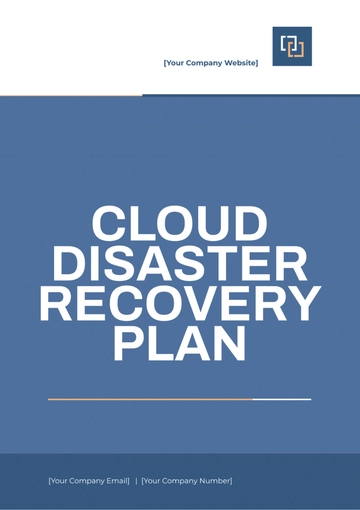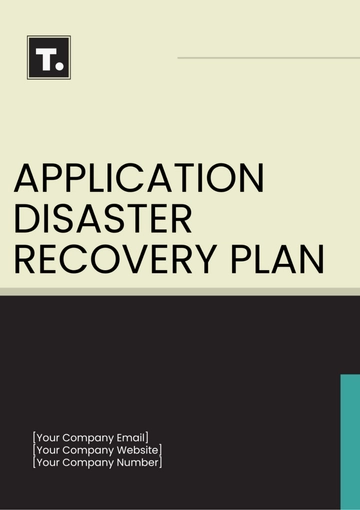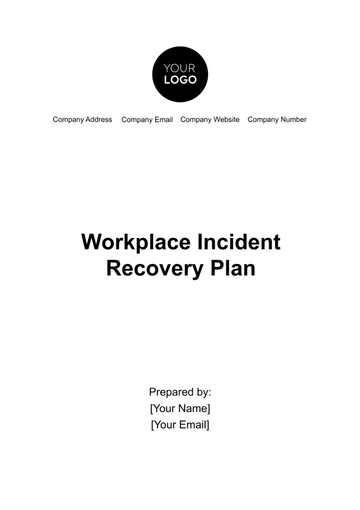Free Hipaa Disaster Recovery Plan
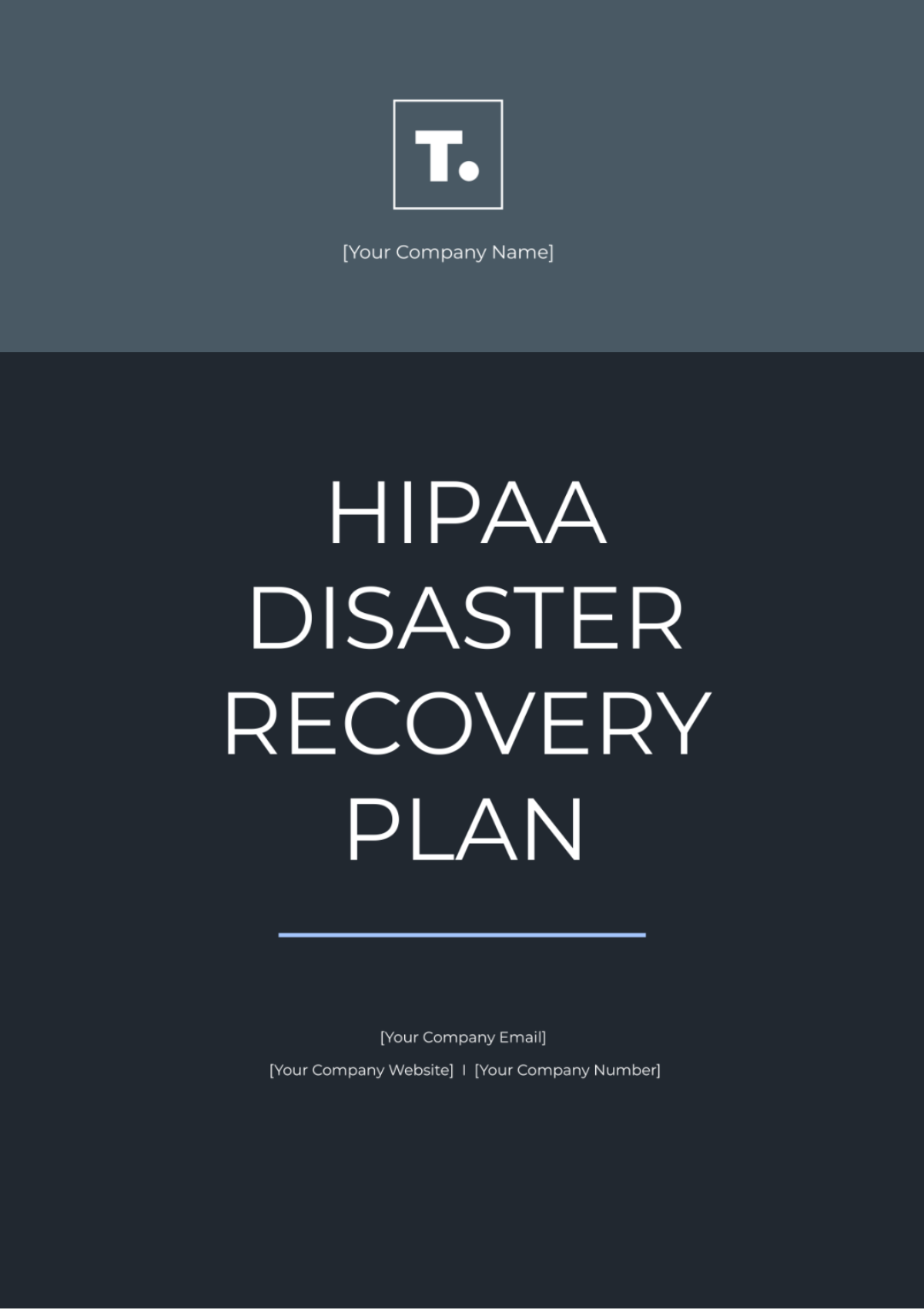
I. Introduction
In the event of a disaster or emergency, it is imperative for [Your Company Name] to have a comprehensive HIPAA Disaster Recovery Plan in place to ensure the continuity of healthcare services and the protection of patient data. This plan outlines the procedures and protocols to be followed by all staff members to minimize the impact of such events on our operations.
II. Scope and Objectives
A. Scope
This plan applies to all departments and personnel within [Your Company Name].
It covers all systems, applications, and data that fall under HIPAA regulations.
B. Objectives
Ensure the continuous availability of critical healthcare services.
Minimize the risk of data loss or corruption.
Maintain compliance with HIPAA regulations during and after a disaster.
III. Roles and Responsibilities
A. Executive Leadership
Provide support and resources for the implementation of the disaster recovery plan.
Approve any necessary budget allocations for recovery efforts.
B. IT Department
[IT Director's Name]:
Oversee the implementation and maintenance of the disaster recovery plan.
Coordinate with external vendors for backup and recovery solutions.
[IT Team Member Names]:
Implement and test backup systems regularly.
Provide technical support during recovery efforts.
C. Compliance Officer
[Compliance Officer's Name]:
Ensure that all recovery efforts comply with HIPAA regulations.
Coordinate with legal counsel if necessary.
IV. Risk Assessment
A. Identification of Risks
Conduct regular risk assessments to identify potential threats to our systems and data.
Evaluate the likelihood and impact of each risk on our operations.
B. Risk Mitigation
Implement appropriate controls and safeguards to mitigate identified risks.
Develop contingency plans for high-risk scenarios.
V. Data Backup and Recovery Procedures
A. Backup Strategy
Utilize encrypted off-site backups to ensure data redundancy and security.
Implement regular backups according to predefined schedules.
B. Recovery Process
Establish clear procedures for data restoration in the event of a disaster.
Test recovery processes periodically to verify their effectiveness.
VI. Communication Plan
A. Internal Communication
Establish a communication hierarchy to ensure timely dissemination of information during a disaster.
Provide training to staff members on communication protocols.
B. External Communication
Designate spokespersons to communicate with external stakeholders, including patients, regulatory agencies, and the media.
Develop templates for communicating updates and instructions to external parties.
VII. Testing and Maintenance Procedures
A. Testing
Conduct regular drills and exercises to simulate disaster scenarios and test the effectiveness of the recovery plan.
Document lessons learned and update the plan accordingly.
B. Maintenance
Review and update the disaster recovery plan annually or as needed to reflect changes in technology, regulations, or organizational structure.
Ensure that all staff members are trained on the latest procedures and protocols.
VIII. Documentation and Training
A. Documentation
Maintain detailed documentation of all aspects of the disaster recovery plan, including procedures, contact information, and recovery timelines.
Store documentation in a secure location accessible to authorized personnel.
B. Training
Provide regular training sessions for all staff members on their roles and responsibilities during a disaster.
Conduct refresher courses as needed to ensure that staff members are prepared to execute the plan effectively.
This HIPAA Disaster Recovery Plan is a living document and will be reviewed and updated regularly to ensure its effectiveness in mitigating the impact of disasters on [Your Company Name]'s operations and safeguarding patient data.
- 100% Customizable, free editor
- Access 1 Million+ Templates, photo’s & graphics
- Download or share as a template
- Click and replace photos, graphics, text, backgrounds
- Resize, crop, AI write & more
- Access advanced editor
Discover peace of mind with the HIPAA Disaster Recovery Plan Template from Template.net. Our editable and customizable template ensures your organization's readiness for emergencies. With user-friendly features and compatibility with our AI Editor Tool, crafting a robust disaster recovery plan has never been easier.
You may also like
- Finance Plan
- Construction Plan
- Sales Plan
- Development Plan
- Career Plan
- Budget Plan
- HR Plan
- Education Plan
- Transition Plan
- Work Plan
- Training Plan
- Communication Plan
- Operation Plan
- Health And Safety Plan
- Strategy Plan
- Professional Development Plan
- Advertising Plan
- Risk Management Plan
- Restaurant Plan
- School Plan
- Nursing Home Patient Care Plan
- Nursing Care Plan
- Plan Event
- Startup Plan
- Social Media Plan
- Staffing Plan
- Annual Plan
- Content Plan
- Payment Plan
- Implementation Plan
- Hotel Plan
- Workout Plan
- Accounting Plan
- Campaign Plan
- Essay Plan
- 30 60 90 Day Plan
- Research Plan
- Recruitment Plan
- 90 Day Plan
- Quarterly Plan
- Emergency Plan
- 5 Year Plan
- Gym Plan
- Personal Plan
- IT and Software Plan
- Treatment Plan
- Real Estate Plan
- Law Firm Plan
- Healthcare Plan
- Improvement Plan
- Media Plan
- 5 Year Business Plan
- Learning Plan
- Marketing Campaign Plan
- Travel Agency Plan
- Cleaning Services Plan
- Interior Design Plan
- Performance Plan
- PR Plan
- Birth Plan
- Life Plan
- SEO Plan
- Disaster Recovery Plan
- Continuity Plan
- Launch Plan
- Legal Plan
- Behavior Plan
- Performance Improvement Plan
- Salon Plan
- Security Plan
- Security Management Plan
- Employee Development Plan
- Quality Plan
- Service Improvement Plan
- Growth Plan
- Incident Response Plan
- Basketball Plan
- Emergency Action Plan
- Product Launch Plan
- Spa Plan
- Employee Training Plan
- Data Analysis Plan
- Employee Action Plan
- Territory Plan
- Audit Plan
- Classroom Plan
- Activity Plan
- Parenting Plan
- Care Plan
- Project Execution Plan
- Exercise Plan
- Internship Plan
- Software Development Plan
- Continuous Improvement Plan
- Leave Plan
- 90 Day Sales Plan
- Advertising Agency Plan
- Employee Transition Plan
- Smart Action Plan
- Workplace Safety Plan
- Behavior Change Plan
- Contingency Plan
- Continuity of Operations Plan
- Health Plan
- Quality Control Plan
- Self Plan
- Sports Development Plan
- Change Management Plan
- Ecommerce Plan
- Personal Financial Plan
- Process Improvement Plan
- 30-60-90 Day Sales Plan
- Crisis Management Plan
- Engagement Plan
- Execution Plan
- Pandemic Plan
- Quality Assurance Plan
- Service Continuity Plan
- Agile Project Plan
- Fundraising Plan
- Job Transition Plan
- Asset Maintenance Plan
- Maintenance Plan
- Software Test Plan
- Staff Training and Development Plan
- 3 Year Plan
- Brand Activation Plan
- Release Plan
- Resource Plan
- Risk Mitigation Plan
- Teacher Plan
- 30 60 90 Day Plan for New Manager
- Food Safety Plan
- Food Truck Plan
- Hiring Plan
- Quality Management Plan
- Wellness Plan
- Behavior Intervention Plan
- Bonus Plan
- Investment Plan
- Maternity Leave Plan
- Pandemic Response Plan
- Succession Planning
- Coaching Plan
- Configuration Management Plan
- Remote Work Plan
- Self Care Plan
- Teaching Plan
- 100-Day Plan
- HACCP Plan
- Student Plan
- Sustainability Plan
- 30 60 90 Day Plan for Interview
- Access Plan
- Site Specific Safety Plan

